Contents
In autumn, all dahlia lovers are actively engaged in preparing the rhizomes of these flowers for wintering. Digging up the roots should be done immediately after the first frost. The weather should be dry and preferably sunny. This article will discuss how the preparation of dahlias for winter should be carried out.
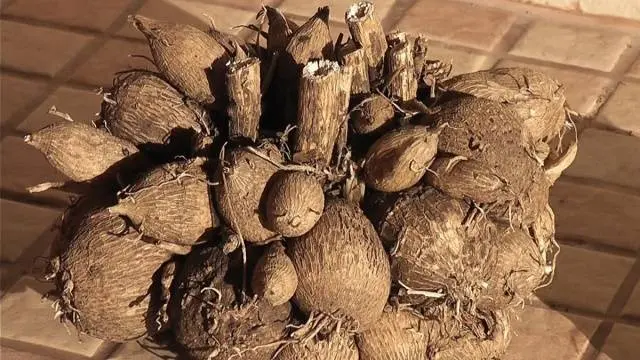
Not only the quality of the planting material, but also its safety until spring depends on how correctly all the preparatory processes are carried out. And, therefore, the preparation of dahlias in the fall should occupy an important place in the life of a gardener.
Preparing dahlias for digging
Before digging up the rhizomes, a thorough culling of the plants should be carried out, since the quality of the planting material and the safety of the flower will depend on this. After that, the soil around the dahlias is removed.
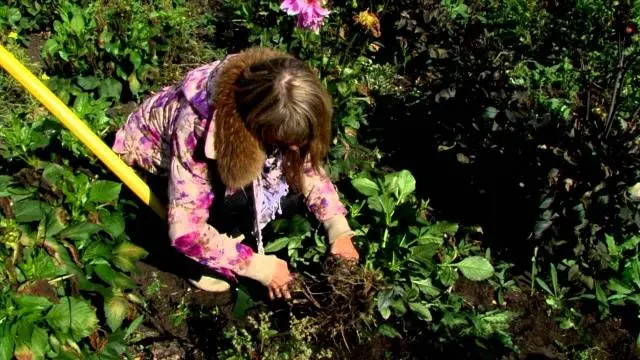
In this case, the infections will be destroyed from the site and healthy planting material will not be affected.
In addition, it is important to consider that the root part of the dahlia accumulates moisture in order to protect itself from drought. Therefore, to prevent rotting of the root collar, watering should be stopped a week before digging up the tubers.
If frosts began earlier than expected, then the root system has not yet had time to prepare for winter. How to be? Leave the tubers in the ground for as long as possible. Cut only cold-damaged stems, no lower than 15 cm from the ground. So, the plant will be able to stay in the ground for about 20 more days, and the root system will have time to mature for wintering.
How to dig up tubers
Caring for dahlias in the autumn includes the obligatory digging of tubers. As mentioned above, the roots need to be dug up and the soil removed. After the tuber must be carefully removed from the ground. All actions must be performed carefully so as not to damage the root system. After that, the tubers are cleaned from the ground and laid out for drying.
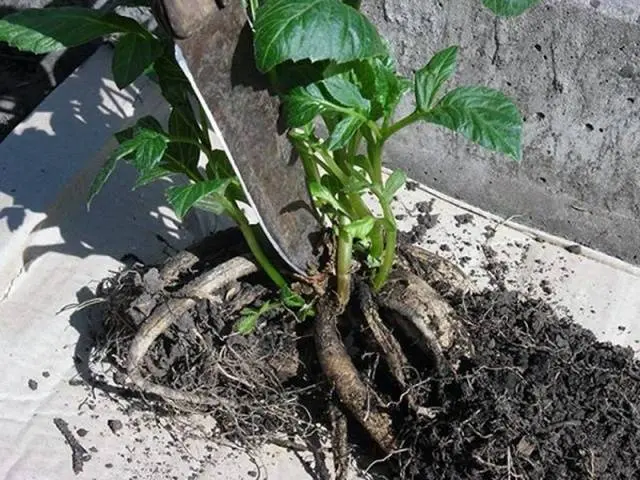
Soil cleansing
The dug out tubers need to be carefully examined. Old roots are removed, as new buds will not be produced next season. In addition, old roots are poorly stored and may not overwinter, which means that it makes no sense to store them.
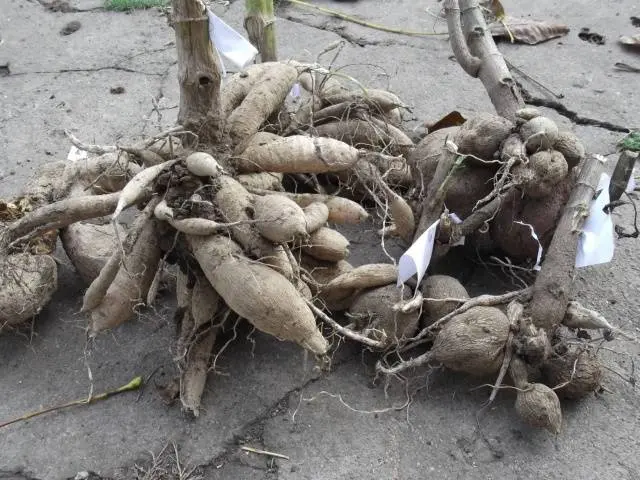
Thin roots are completely cut off, and long ones are simply shortened. In the process of such cleaning, you will form compact tubers that will be easier not only to move from place to place, but also to save.
Some growers believe that it is necessary to wash the roots before storage, while others are convinced that this should not be done. It is believed that when flushing, it is easier to detect damage. Other flower growers claim that the cambium is damaged during the washing process, as a result of which the shelf life of dahlia roots is reduced. Which of these options to choose is up to you.
Division of dahlia tubers
The division of tubers into divisions is carried out in the fall, before the onset of the winter period. In the spring, these manipulations can lead to damage to the roots, as they coarsen over the winter. Although the autumn division also has its drawbacks. For example, it is difficult to see the buds from which new stems will grow next season.
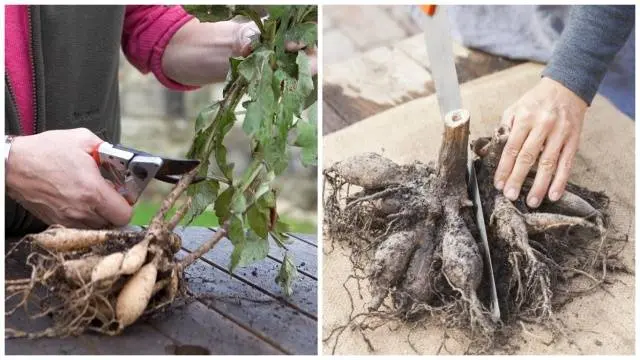
In order for the buds to germinate in the spring, leave a fragment of the neck on each division. After that, they need to be sorted into boxes for storage, divided into small groups.
Large tubers are cut and carefully examined. If you have noticed brown, rusty and dark soft spots, then this is a clear sign of decay. Cut off the lesions to a healthy light-colored tissue. Sections must be treated with crushed charcoal or lime.
How to label tubers
Tuber marking is needed if you grow several varieties of dahlias in a flower bed. If you mark the planting material, you will not re-sort the flowers. Strong tubers mark in a special way, for example, with an asterisk or a tick. So, you can use them for cuttings in the spring.
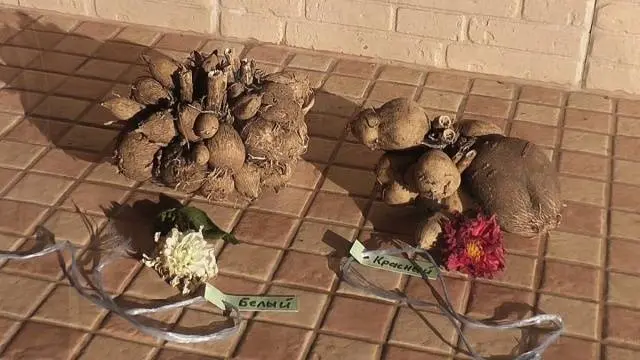
If you simply numbered the tubers, then the markings must be written in a notebook. In this case, in the spring you will be able to understand where what kind of flower is and plant them correctly on the beds.
Tuber drying
If you still decide to rinse the tubers, then it would be appropriate to disinfect them. For example, in a solution of potassium permanganate. Well, after these procedures, the rhizomes should be thoroughly dried. To do this, they need to be shifted to a well-ventilated cool room. Tubers can also be dried outside, but only in dry and sunny weather.
It is impossible to dry planting material in heat, as too much moisture will evaporate from it. As a result, the tubers will dry out and will not be able to germinate in the spring. In the process of drying, the tubers must be laid with the stems down. So, excess water will evaporate from them. After about a week, cut off the small roots and shorten the stems to 3 cm.
Alternative methods of preparing planting material for winter
Some flower growers save dahlia tubers with a clod of earth or treat them with paraffin. Under such circumstances, preparatory work must be carried out in a different way. After the first frost, the rhizomes should be removed from the ground along with a clod of soil. They are dried in an unheated room, which should be well ventilated.
Such planting material should be dried at a temperature not higher than +16℃ for 7 days. You can then cut the stems and transfer the rhizomes to permanent storage, such as boxes or crates.
Paraffin treatment
To reliably protect the tubers from spoilage, you can treat them with paraffin. To do this, they need to be trained. So, the rhizomes are cleaned of soil and divided into small parts. Leave large enough stems and cut off small roots.
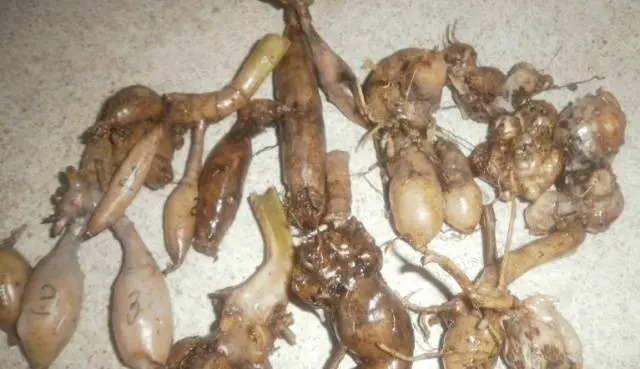
Disinfect delenki in a solution of potassium permanganate. In this solution, the tubers should stand for about 20 minutes. Dry them for two days. After that, prepare paraffin candles (their number depends on how many tubers you have). Candles need to be melted in a water bath.
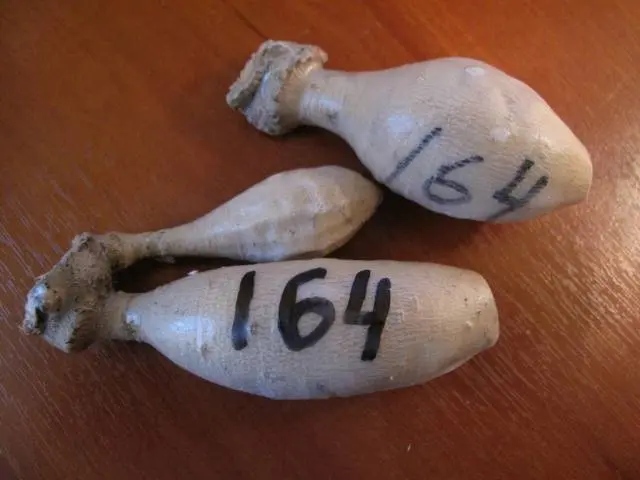
Paraffin should melt to a semi-liquid state. Dip tubers in melted paraffin. Under the influence of oxygen, the paraffin will instantly harden on the treated rhizomes. After that, they can be wrapped with film or paper and placed in boxes/cartons. However, before planting, it will be necessary to remove the protective shell from the tubers.
Conclusion
If you follow all the stages of preparing dahlia rhizomes for wintering, you will be able to save varieties and increase their number next season. We also offer you a video material similar to the topic:









